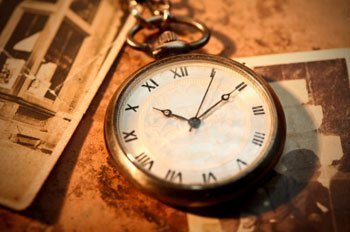The history of hypnosis is a captivating journey that spans centuries, deeply rooted in ancient spiritual practices and shaped by the contributions of influential figures throughout time. From its origins in ancient civilizations to its modern therapeutic applications, hypnosis has evolved, intertwining traditional wisdom with scientific exploration. In this article, we will delve into the rich tapestry of the evolution of hypnosis, highlighting key milestones and the remarkable individuals who have paved the way.
Evolution of Hypnosis
Ancient Origins and Spiritual Ceremonies
Hypnosis finds its earliest roots in ancient civilizations, where spiritual leaders, shamans, and healers explored altered states of consciousness for healing and spiritual growth. Through visualization, suggestion, and deep focus, these early pioneers tapped into the innate power of the mind to access altered states of consciousness and promote well-being. Hypnosis was utilized in spiritual ceremonies and healing rituals, facilitating connections with higher realms and unlocking hidden potentials within the human mind and spirit.
Franz Anton Mesmer and Mesmerism
During the 18th century, Franz Anton Mesmer, an Austrian physician, made significant contributions to the development of hypnosis with his theory of “animal magnetism.” Mesmer believed in the existence of a universal fluid that flowed through living beings, which he used to induce trances and facilitate healing. While his theories eventually faded from the mainstream, Mesmer’s work played a pivotal role in shaping the understanding and acceptance of hypnosis.
Scientific Advancement and James Braid
James Braid, a Scottish surgeon, emerged as a key figure in the scientific exploration of hypnosis during the 19th century. Rejecting Mesmer’s concept of animal magnetism, Braid coined the term “hypnosis” and emphasized the role of focused attention. He proposed that hypnosis was a state of heightened concentration rather than sleep. Braid’s scientific approach and research laid the foundation for hypnosis as a legitimate field of study, bridging the gap between spiritual practices and scientific inquiry.
Integration of Hypnosis and Spiritual Practices

As hypnosis continued to evolve, it became evident that it shared a profound connection with meditation and other traditional spiritual practices. The process of inducing a trance-like state and accessing the subconscious mind resonated with ancient wisdom teachings. Practitioners recognized the potential of hypnosis as a tool for exploring the depths of consciousness, enhancing spiritual growth, and uncovering hidden truths within the self. Concepts from Eastern philosophies, such as mindfulness, visualization, and the power of intention, found their way into hypnotherapy techniques, expanding its potential for personal growth, healing, and self-discovery.
Milton Erickson and Transpersonal Hypnosis
Milton Erickson, a renowned hypnotherapist, embraced a transpersonal approach to hypnosis that drew inspiration from spiritual traditions. Erickson recognized the inherent wisdom of the unconscious mind and emphasized the importance of accessing inner resources for healing and transformation. His work demonstrated the profound relationship between hypnosis and spirituality, emphasizing the interplay between the conscious and unconscious realms of the mind.
Hypnosis and Mindful Awareness
In recent years, the practice of mindfulness and the integration of hypnosis have gained significant attention. Mindfulness, rooted in ancient Buddhist teachings, focuses on cultivating present-moment awareness and non-judgmental acceptance. When combined with hypnosis, mindfulness enhances the depth and effectiveness of the hypnotic experience, promoting profound relaxation, insight, and personal growth.
Traditional Practices and Contemporary Applications
As hypnosis continues to evolve, its connection with traditional spiritual practices remains strong. Modern hypnotherapy techniques often incorporate elements of meditation, visualization, and mindfulness, providing a holistic approach to healing and personal development. Furthermore, hypnosis has found its place in spiritual retreats and workshops, where individuals can explore the depths of their consciousness and tap into their inner wisdom.
History of Hypnosis: Key Figures and Their Contributions
Along with Franz Anton Mesmer introduced the concept of animal magnetism and James Braid who laid the scientific foundation, throughout history, numerous influential figures have shaped the field of hypnosis.
The Marquis de Puysegur (1751-1825): Exploring Trance States
The Marquis de Puysegur, a pupil of Mesmer, conducted experiments using animal magnetism. He discovered that some subjects entered a state of sleep but remained able to communicate and respond to suggestions. This trance-like state fascinated Puysegur, who recognized the importance of psychological influences in the success or failure of magnetism.
John Elliotson (1791-1868) and James Esdaile: Divided Opinions
John Elliotson, an English physician, used animal magnetism in his medical practice and faced professional consequences, including disbarment from the medical profession. Around the same time, James Esdaile, a surgeon, employed “mesmeric sleep” as an anesthetic during operations. The medical community held contrasting opinions on the usefulness of mesmerism, creating a divide in their acceptance of hypnosis.
James Braid (1795-1860): Coining the Term “Hypnosis”
In 1843, James Braid, a Scottish surgeon, coined the terms “hypnotism” and “hypnosis.” He conducted experiments and found that subjects could enter a trance by fixating their gaze on a bright object, such as a silver watch. Braid believed that hypnosis involved a neurophysiological process and highlighted its effectiveness in treating conditions with no identifiable organic origin. His work laid the foundation for scientific exploration and understanding of hypnosis.
Jean-Martin Charcot (1825-1893): Hypnosis and Hysterics
Jean-Martin Charcot, a renowned neurologist, utilized hypnosis in the treatment of hysterics. Through his work at the Salpêtrière Hospital in Paris, Charcot observed that hysteric patients exhibited epileptic-like symptoms during hypnosis, leading him to conclude that hypnosis induced a form of seizure. His findings furthered the understanding of hypnosis as a therapeutic tool.
Hippolyte Bernheim (1837-1919): Psychological Nature of Hypnosis
Hippolyte Bernheim, a professor of medicine at the University of Nancy, emphasized the psychological nature of hypnosis. He viewed hypnosis as a special form of sleep where the subject’s attention focused on the suggestions made by the hypnotist. Bernheim’s work highlighted the power of suggestion and the significance of psychological factors in the process of hypnosis.
Emile Coué (1857-1926): Autosuggestion and Self-Hypnosis
Emile Coué, a French psychologist and pharmacist, introduced a method of psychotherapy, healing, and self-improvement based on autosuggestion, a form of self-hypnosis. He believed that autosuggestion was a powerful force within individuals and that by repeating specific words or images, one could change their thoughts, feelings, and behaviour. Coué’s approach emphasized the potential of the subconscious mind in achieving personal growth and transformation.
Sigmund Freud (1856-1939) and Carl Jung (1875-1961): Contributions to Psychoanalysis
Sigmund Freud, an Austrian neurologist, initially incorporated hypnosis into his therapeutic practices but eventually shifted his focus to other techniques. Freud explored the unconscious mind through observations in hypnosis, leading to the development of psychoanalysis and the understanding of the importance of unconscious processes.
Carl Jung, a student and colleague of Freud, developed his own interests, focusing on the collective unconscious and archetypes. While Jung did not actively use hypnosis in his practice, he encouraged his patients to engage in active imagination, emphasizing the concept of the inner guide in the healing process.
Clark L. Hull (1884-1952): Demystifying Hypnosis
In the 1920s, psychologists such as Clark L. Hull conducted experimental investigations into hypnosis. Hull’s research revealed that hypnosis was essentially a normal part of human nature and depended on the subject’s imagination and suggestibility. His work contributed to demystifying hypnosis and understanding its role in human psychology.
Milton Erickson (1901-1980): Pioneering Hypnotherapist
Milton Erickson, an American psychiatrist and psychologist, specialized in medical hypnosis and family therapy. He developed the approach known as Ericksonian hypnotherapy, which utilized indirect suggestions and focused on engaging the inner resources and experiential life of the client. Erickson viewed hypnosis as a favorable climate for learning and advised trusting the unconscious mind. It wouldn’t be an exaggeration to say that Erickson was one of the most influencial figures when it comes to History of Hypnosis.
Dave Elman (1900-1967): Fast Inductions and Medical Applications
Dave Elman, inspired by his father’s healing experience with hypnosis, dedicated himself to the study and practice of hypnosis. He became known as “The World’s Youngest and Fastest Hypnotist” for his ability to induce hypnotic states in subjects within minutes. Elman realized the medical applications of hypnosis and trained numerous medical professionals, promoting the use of hypnotherapy in medicine.
Dr. John G. Kappas (1925-2002): Theory of Mind and Kappasinian Hypnosis
Dr. John G. Kappas developed the “Theory of Mind,” which explained how our minds work and why hypnosis is possible. His work laid the foundation for the Kappasinian Hypnosis style, and he founded the Hypnosis Motivation Institute (HMI) to teach hypnotherapy and promote professional standards in the field.
Ormond McGill (1913-2005): Stage Hypnosis and Mysticism
Ormond McGill, known as the “Dean of American Hypnotists,” practiced both stage hypnosis and hypnotherapy. He had a keen interest in meditation, mysticism, and religious mysteries, even traveling to India to study and write about hypnosis and mysticism in the country. McGill’s work and writings contributed to a greater understanding and acceptance of hypnosis.
Richard Bandler and John Grinder: Neuro-Linguistic Programming (NLP)
Richard Bandler and John Grinder, in the 1970s, developed neuro-linguistic programming (NLP), a theory of interpersonal influence and self-help. Although NLP is not strictly considered a branch of hypnotism, many hypnotherapists incorporate NLP techniques into their practice, further expanding the scope and effectiveness of hypnosis.
British Medical Association
In 1955, the British Medical Association became the first major medical organization to support the therapeutic use of hypnosis. It was closely followed by the American Medical Association in 1958. These endorsements marked a turning point in the acceptance and integration of hypnosis into mainstream medicine.
Conclusion
Hypnosis finds applications in various fields, including dentistry, medicine, and psychology. When used alongside conventional treatments and therapies, it has proven to be beneficial.
Despite occasional controversies, often stemming from the practices of unscrupulous stage hypnotists, hypnosis continues to thrive as a recognized form of relaxation and therapeutic intervention. Individuals can even learn self-hypnosis techniques, such as progressive relaxation, to harness its benefits. Hypnosis is widely employed in addiction treatment, aiding smoking cessation, and other behavioural changes, but it should always be conducted by a trained professional in a controlled setting.
In conclusion, the history of hypnosis is a rich tapestry of ancient healing practices, scientific exploration, and therapeutic breakthroughs. The contributions of numerous influential figures have propelled the understanding and acceptance of hypnosis as a valuable tool for personal transformation and healing.

